Numerical Analysis of Low-Velocity Impact Behaviour of Protective Concrete-Filled Steel Plates Composite Wall
Abstract
1. Introduction
2. The PSC Wall System
3. Finite Element Model Development and Validation
3.1. General Description
3.2. Material Constitutive Models
3.2.1. Steel
3.2.2. Concrete
3.2.3. Aluminum
4. Validation of the Finite Element Modelling Method
5. The PSC Wall Development
5.1. Cross-Section Settings
5.2. Energy-Absorbing Layer Material
5.3. The PSC Wall Deformation Behaviour
6. Parameter Analysis
6.1. Geometrical Parameters
6.1.1. The Surface Steel Plate Thickness
6.1.2. The Internal Steel Plate Thickness
6.1.3. The Energy-Absorbing Layer Thickness
6.1.4. The Concrete Thickness of PSC Wall
6.1.5. Spacing of Bolt Binding Bar
6.2. Impact Load Parameters
6.2.1. Impact Energy
6.2.2. Impact Mass
6.2.3. Axial Compression Ratio
7. Energy Design Method
8. Conclusions
Author Contributions
Funding
Institutional Review Board Statement
Informed Consent Statement
Data Availability Statement
Conflicts of Interest
References
- Phukan, A.; Mohanty, D.D. Seismic hazard estimation and medium-term earthquake precursor analysis of North East India: An assessment on large earthquake scenario. All Earth 2023, 35, 46–64. [Google Scholar] [CrossRef]
- Wang, Y.N.; Chen, Q.; Peng, J.R.; Chen, J. A Brief Report on the Collapse of Self-Built Houses on 29 April 2022, in Changsha, China. Int. J. Environ. Res. Public Health 2023, 20, 61. [Google Scholar] [CrossRef] [PubMed]
- Li, H.N.; Liu, Y.; Li, C.; Zheng, X.W. Multihazard fragility assessment of steel-concrete composite frame structures with buckling-restrained braces subjected to combined earthquake and wind. Struct. Des. Tall Spec. Build. 2020, 29, e1746. [Google Scholar] [CrossRef]
- Lan, S.; Lok, T.-S.; Heng, L. Composite structural panels subjected to explosive loading. Constr. Build. Mater. 2005, 19, 387–395. [Google Scholar] [CrossRef]
- Sohel, K.M.A.; Liew, J.Y.R. Behavior of steel–concrete–steel sandwich slabs subject to impact load. J. Constr. Steel Res. 2014, 100, 163–175. [Google Scholar] [CrossRef]
- Remennikov, A.M.; Kong, S.Y.; Uy, B. The response of axially restrained non-composite steel-concrete-steel sandwich panels due to large impact loading. Eng. Struct. 2013, 49, 806–818. [Google Scholar] [CrossRef]
- Schubel, P.M.; Luo, J.-J.; Daniel, I.M. Impact and post impact behavior of composite sandwich panels. Compos. Part A Appl. Sci. Manuf. 2007, 38, 1051–1057. [Google Scholar] [CrossRef]
- Schoeppner, G.A.; Abrate, S. Delamination threshold loads for low velocity impact on composite laminates. Compos. Part A Appl. Sci. Manuf. 2000, 31, 903–915. [Google Scholar] [CrossRef]
- Zhao, W.; Guo, Q. Experimental study on impact and post-impact behavior of steel-concrete composite panels. Thin-Walled Struct. 2018, 130, 405–413. [Google Scholar] [CrossRef]
- Flores-Johnson, E.A.; Li, Q.M. Structural behaviour of composite sandwich panels with plain and fibre-reinforced foamed concrete cores and corrugated steel faces. Compos. Struct. 2012, 94, 1555–1563. [Google Scholar] [CrossRef]
- Alonso, L.; Garcia-Gonzalez, D.; Navarro, C.; Garcia-Castillo, S.K. A non-dimensional theoretical approach to model high-velocity impact on thick woven plates. Steel Compos. Struct. 2021, 38, 717–737. [Google Scholar] [CrossRef]
- Zhang, Y.T.; Shan, B.; Kang, T.H.K.; Xiao, Y. Axial impact behavior of confined concrete filled square steel tubes using fiber reinforced polymer. Steel Compos. Struct. 2021, 38, 165–176. [Google Scholar] [CrossRef]
- Sabouri-Ghomi, S.; Nasri, A.; Jahani, Y.; Bhowmick, A.K. Improved analytical formulation for Steel-Concrete (SC) composite walls under out-of-plane loads. Steel Compos. Struct. 2021, 38, 463–476. [Google Scholar] [CrossRef]
- Zhang, C.; An, D.; Zhu, L. Axial Compressive Behavior of Steel-Damping-Concrete Composite Wall. Appl. Sci. 2019, 9, 4679. [Google Scholar] [CrossRef]
- Kim, J.K.; Mackay, D.B.; Mai, Y.W. Drop-weight impact damage tolerance of CFRP with rubber-modified epoxy matrix. Composites 1993, 24, 485–494. [Google Scholar] [CrossRef]
- Stelldinger, E.; Kühhorn, A.; Kober, M. Experimental evaluation of the low-velocity impact damage resistance of CFRP tubes with integrated rubber layer. Compos. Struct. 2016, 139, 30–35. [Google Scholar] [CrossRef]
- Bakir, M.; Bahceci, E.; Meyer, J.L.; Economy, J.; Jasiuk, I. Aromatic thermosetting copolyester foam core and aluminum foam face three-layer sandwich composite for impact energy absorption. Mater. Lett. 2017, 196, 288–291. [Google Scholar] [CrossRef]
- Liu, H.; Cao, Z.K.; Luo, H.J.; Shi, J.C.; Yao, G.C. Performance of closed-cell aluminum foams subjected to impact loading. Mater. Sci. Eng. A 2013, 570, 27–31. [Google Scholar] [CrossRef]
- Das, A.; Biswas, P.; Tarafder, S.; Chakrabarti, D.; Sivaprasad, S. Effect of Strengthening Mechanism on Strain-Rate Related Tensile Properties of Low-Carbon Sheet Steels for Automotive Application. J. Mater. Eng. Perform. 2018, 27, 3709–3722. [Google Scholar] [CrossRef]
- Guo, Z.; Wang, C. Investigation of strength and failure criterion of concrete under multi-axial stresses. China Civ. Eng. J. 1991, 24, 1–14. [Google Scholar]
- Rajak, D.K.; Linul, E. Crushing response of Composite Metallic Foams: Density and High Strain Rate effects. J. Alloys Compd. 2021, 871, 159614. [Google Scholar] [CrossRef]
- Guo, K.; Zhu, L.; Li, Y.; Yu, T.; Zhou, Q. Dynamic behavior of aluminum foam sandwich plates for lightweight ship at low temperature. J. Ship Mech. 2019, 23, 591–601. (in Chinese). [Google Scholar] [CrossRef]
- Guo, Q.Q.; Zhao, W.Y. Design of steel-concrete composite walls subjected to low-velocity impact. J. Constr. Steel Res. 2019, 154, 190–196. [Google Scholar] [CrossRef]
- Kishi, N.; Mikami, H. Empirical Formulas for Designing Reinforced Concrete Beams under Impact Loading. ACI Struct. J. 2012, 109, 509–519. [Google Scholar]
- Tachibana, S.; Masuya, H.; Nakamura, S. Performance based design of reinforced concrete beams under impact. Nat. Hazards Earth Syst. Sci. 2010, 10, 1069–1078. [Google Scholar] [CrossRef]
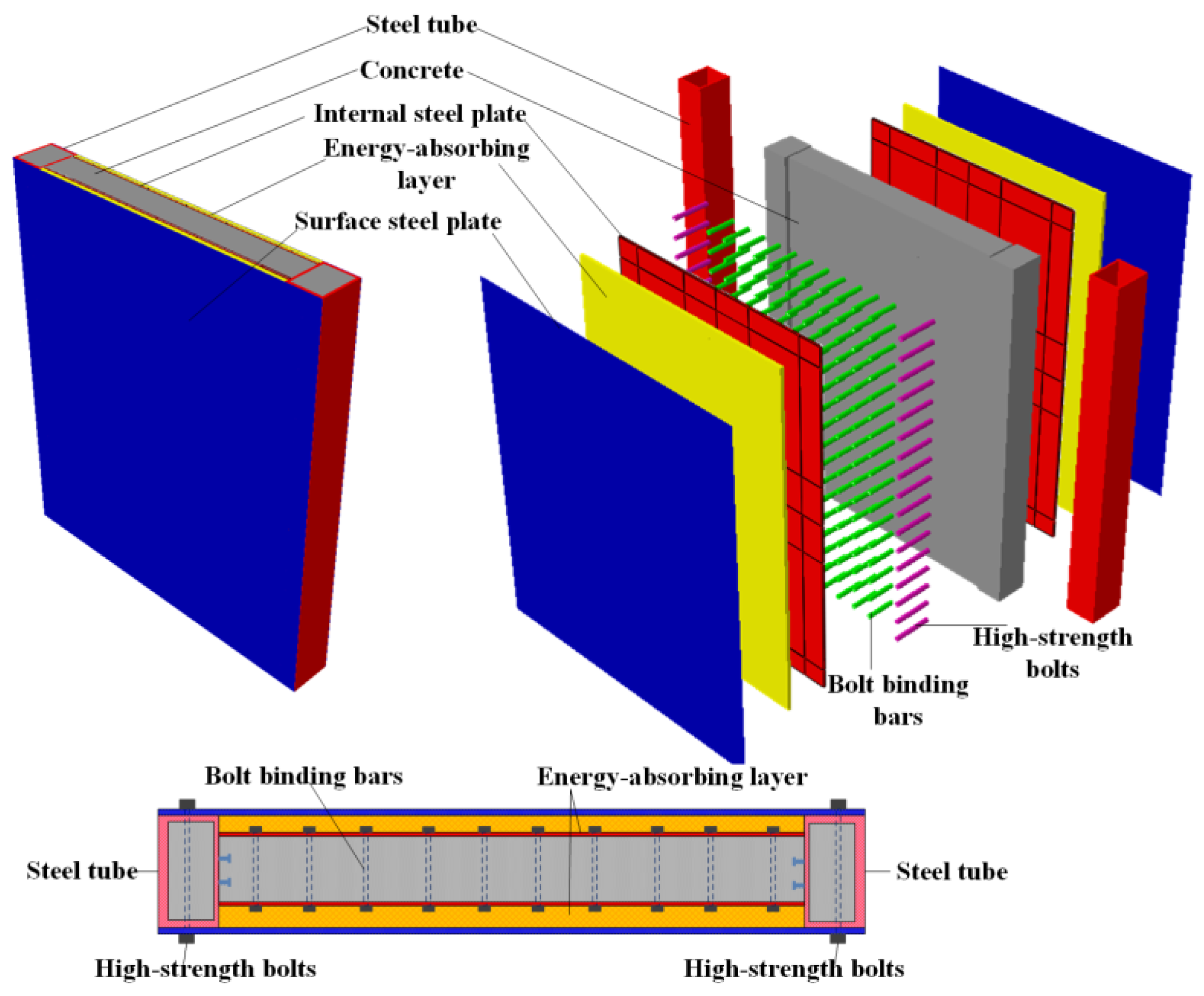

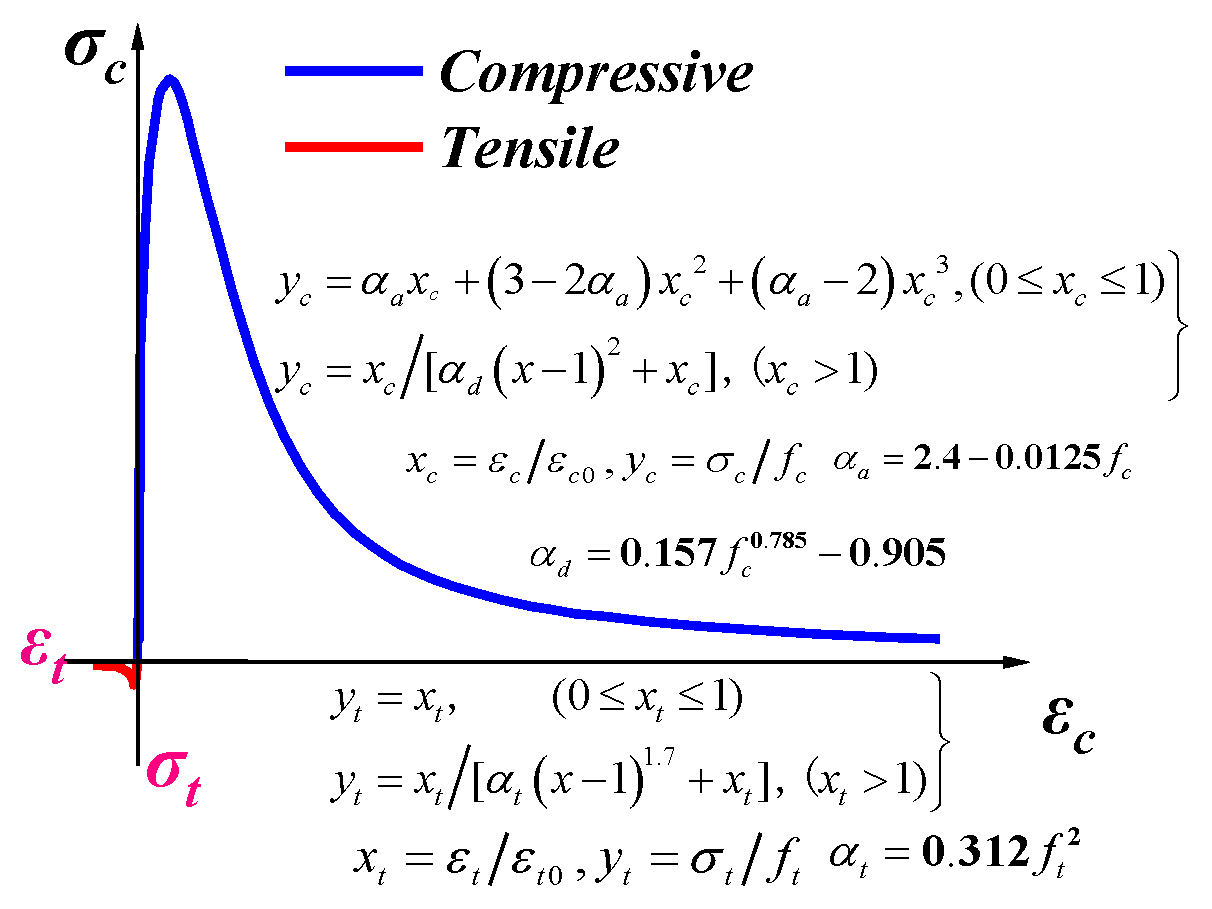

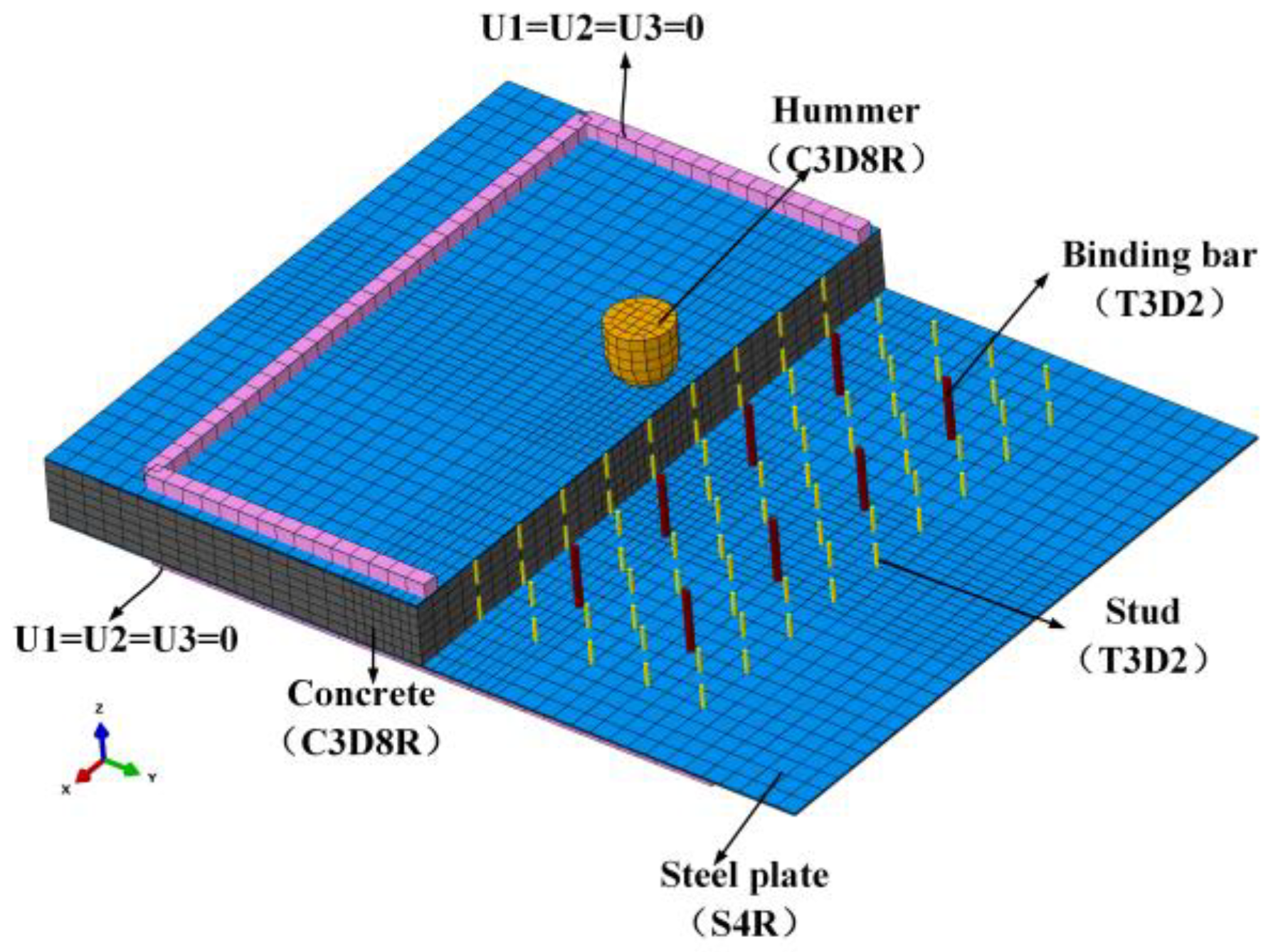

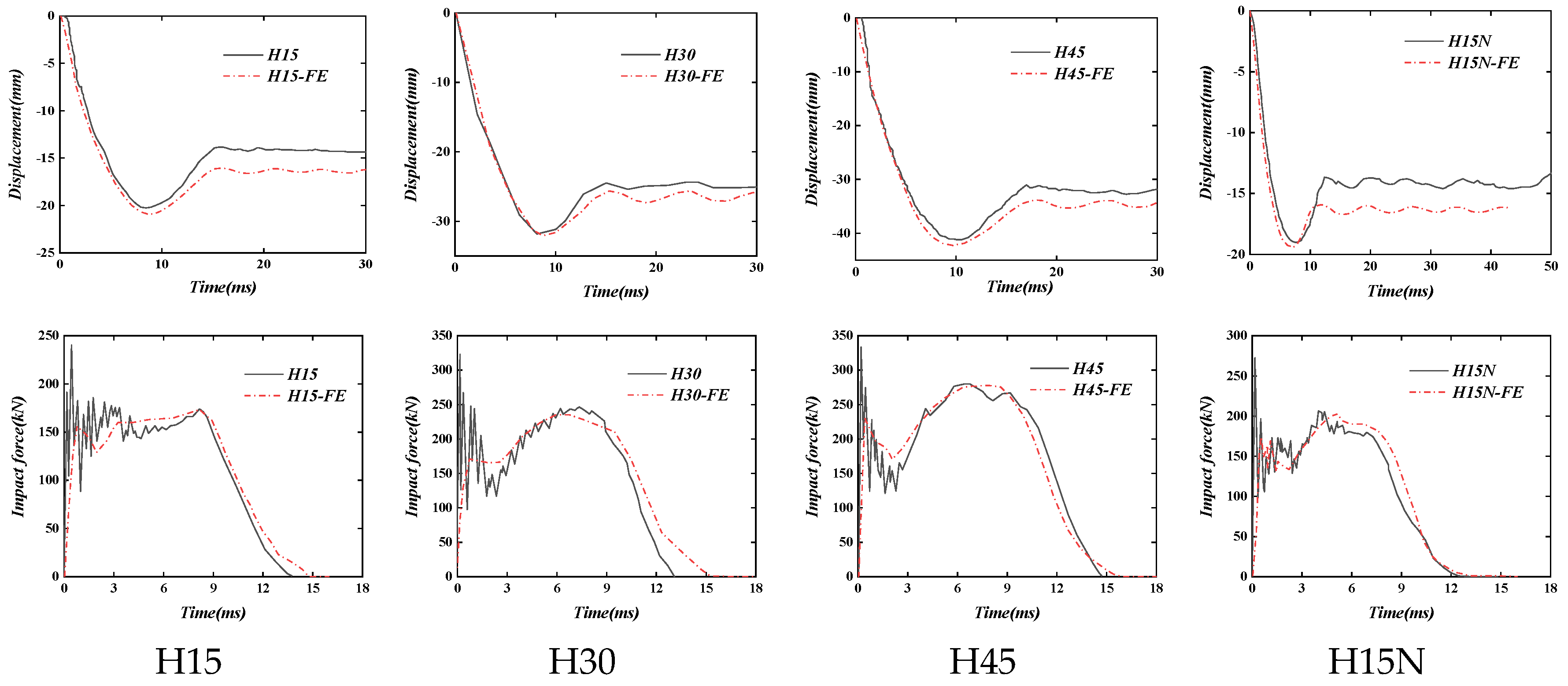

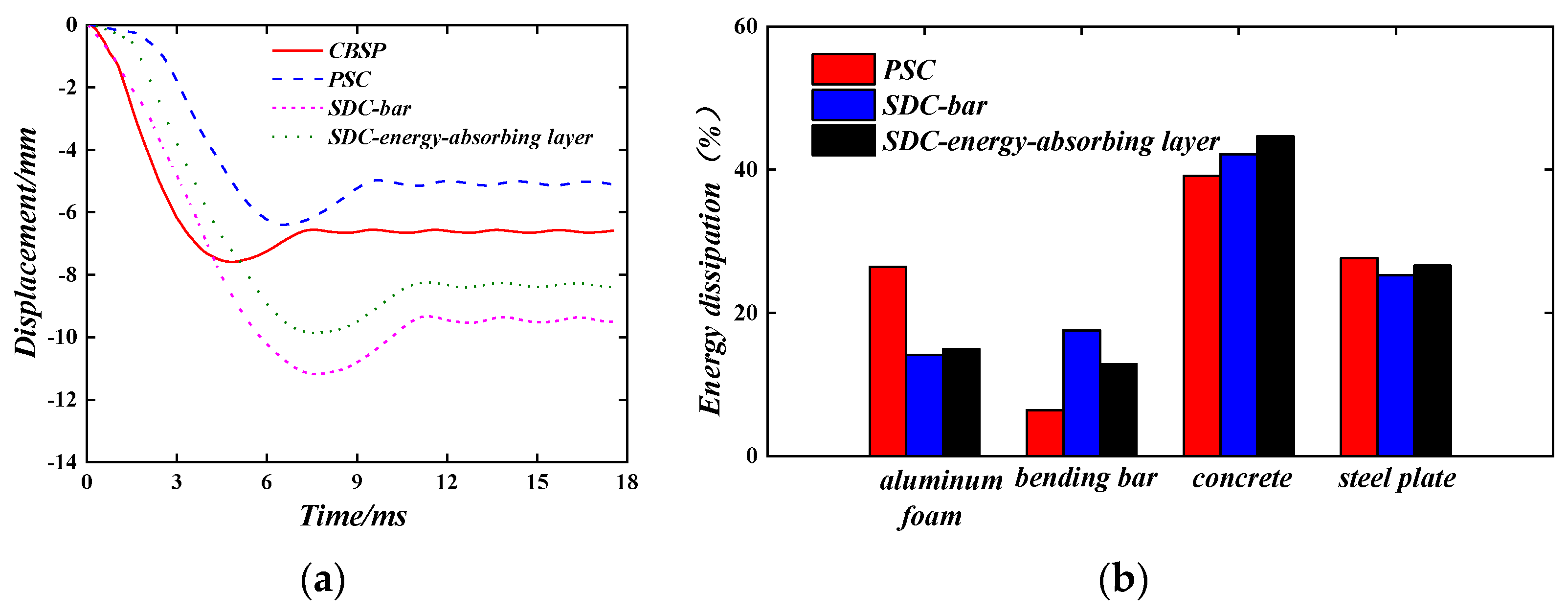
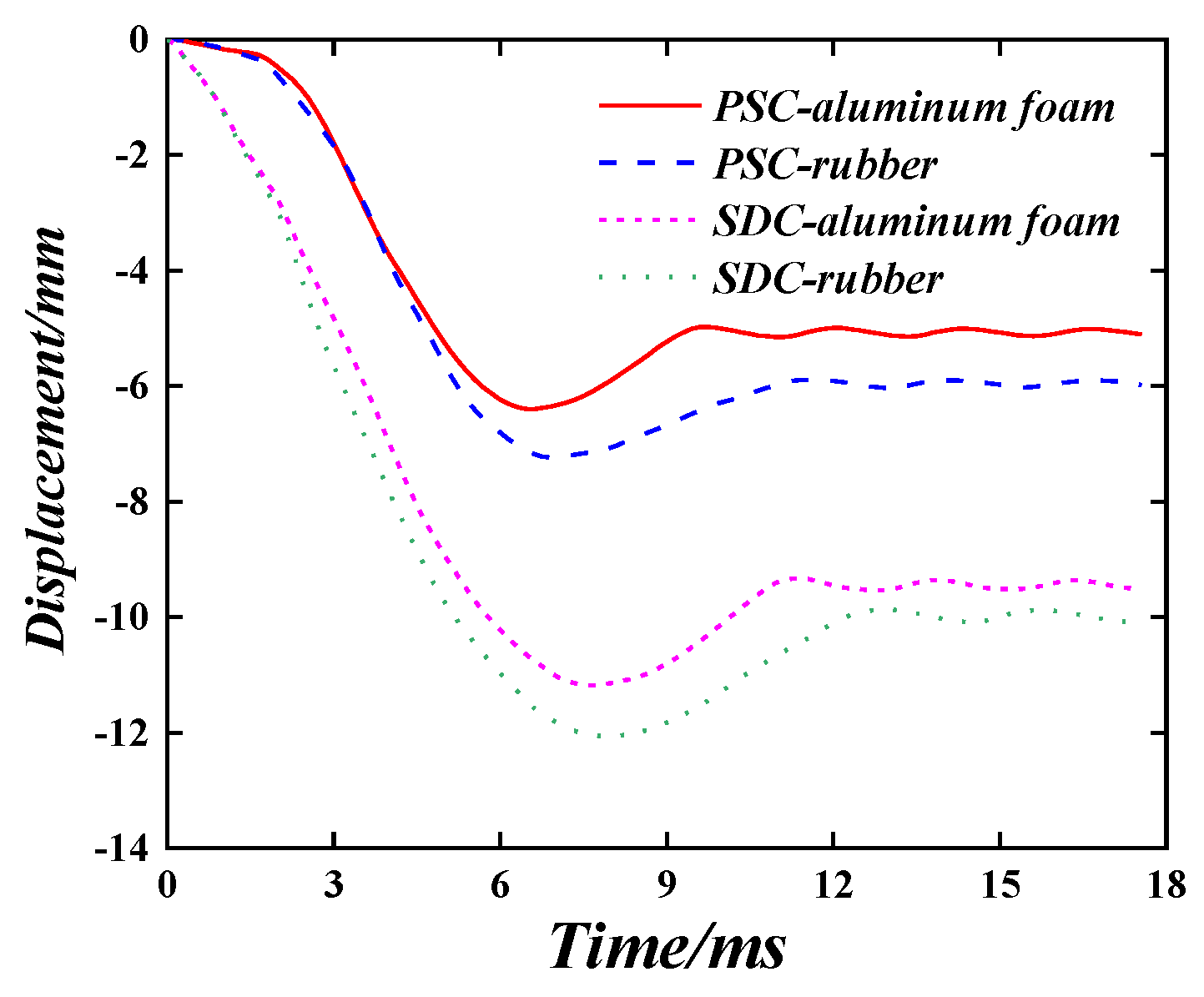
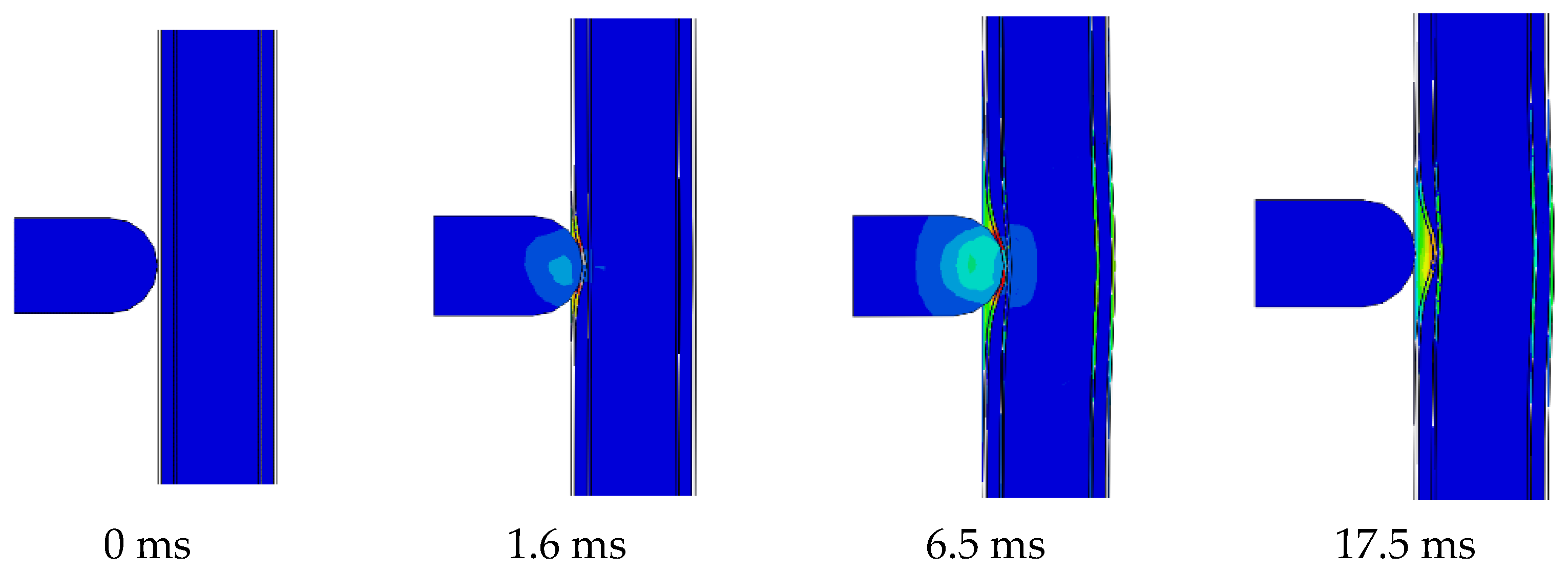
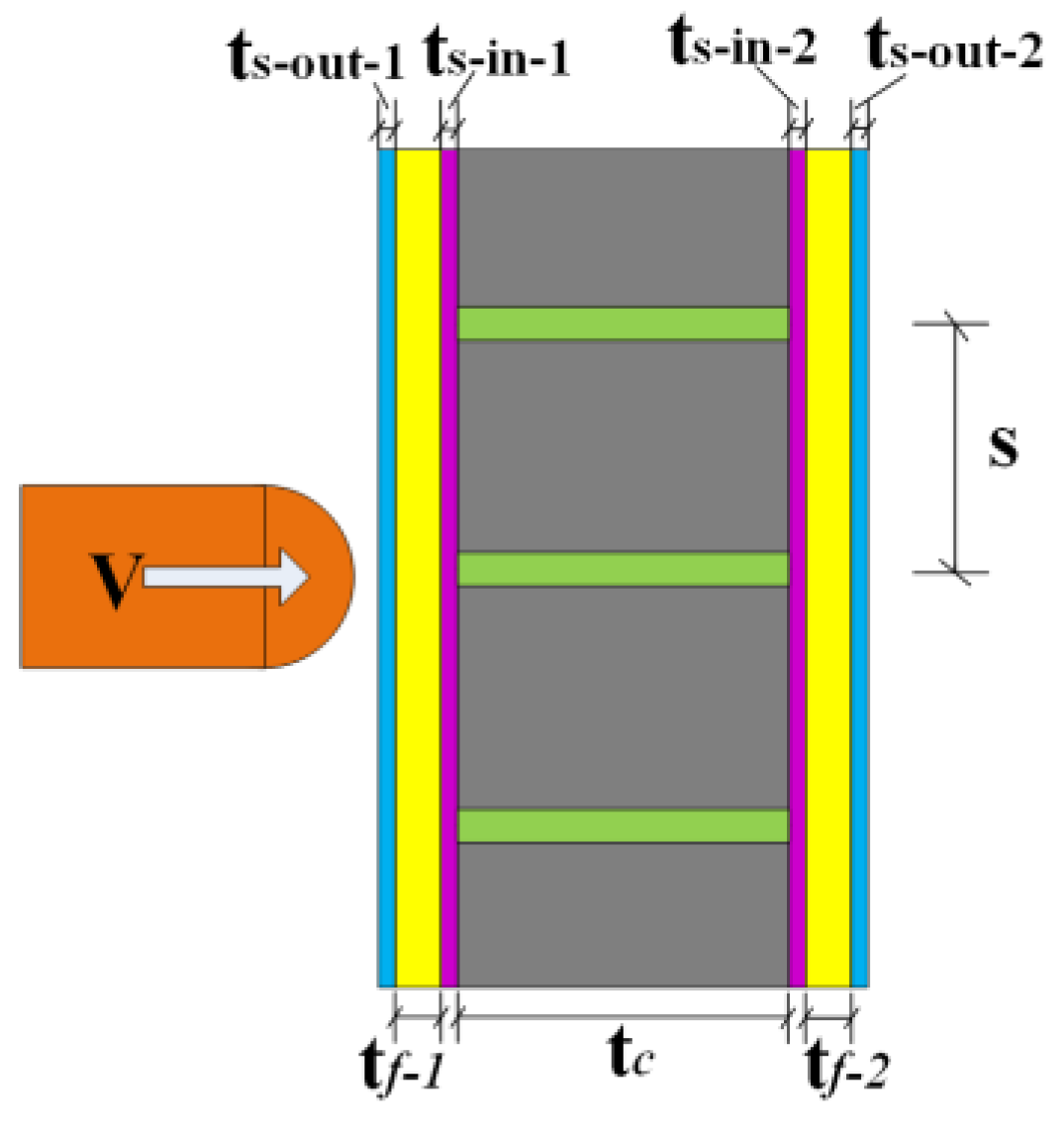
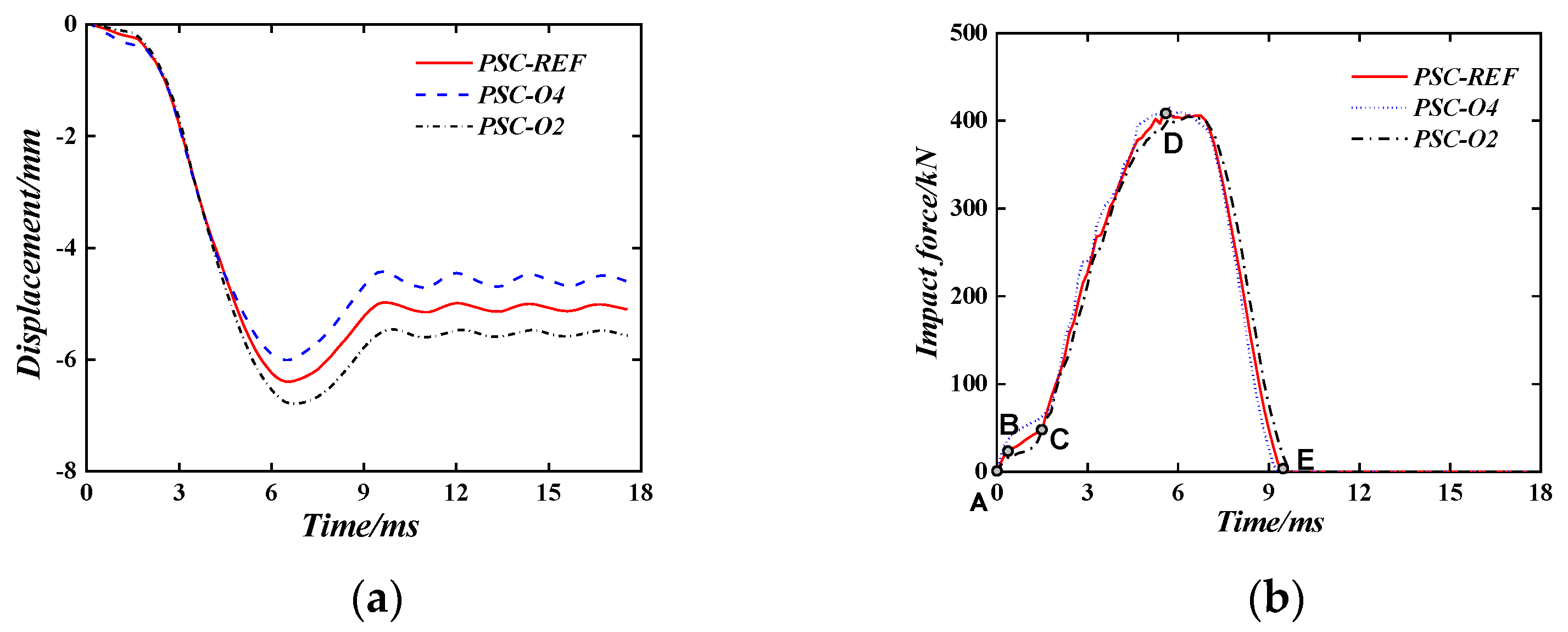
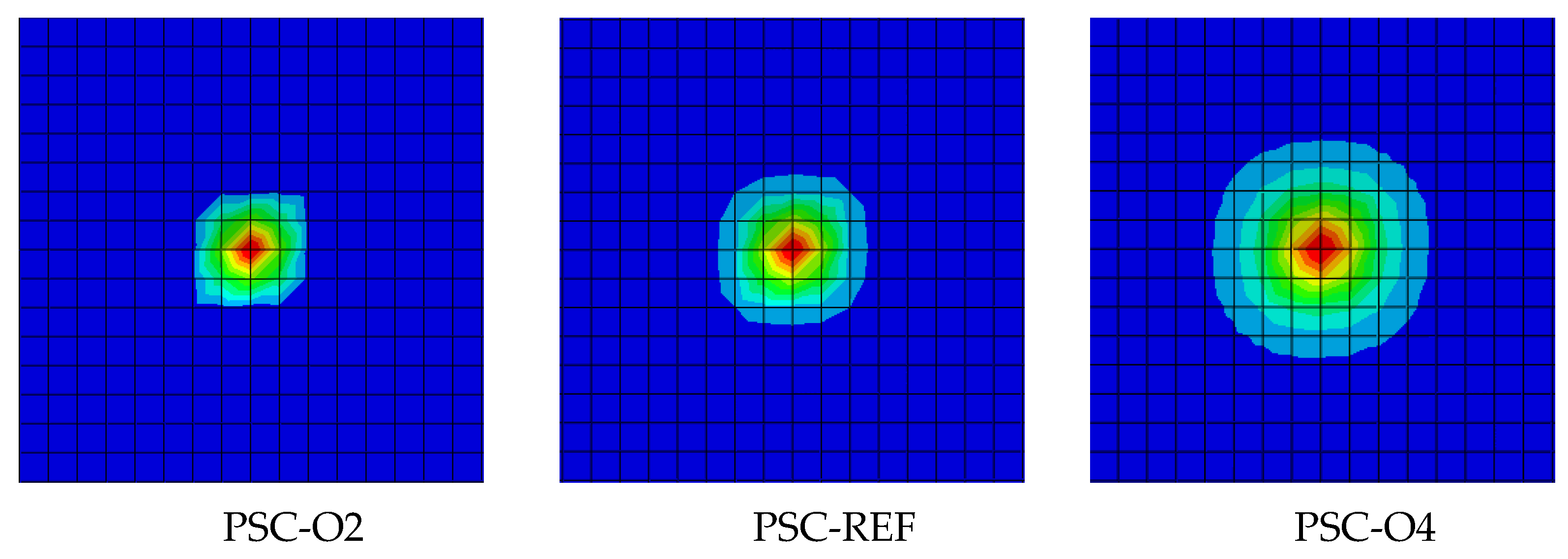
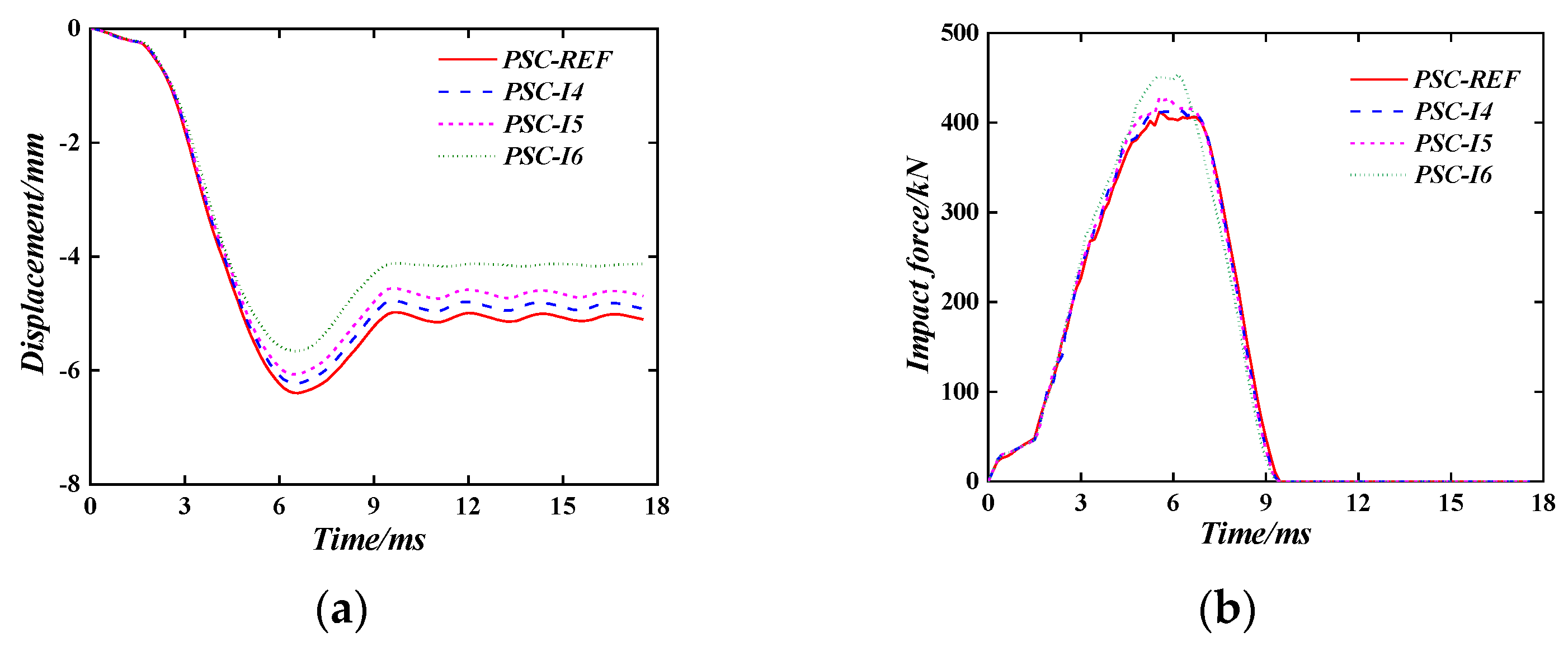




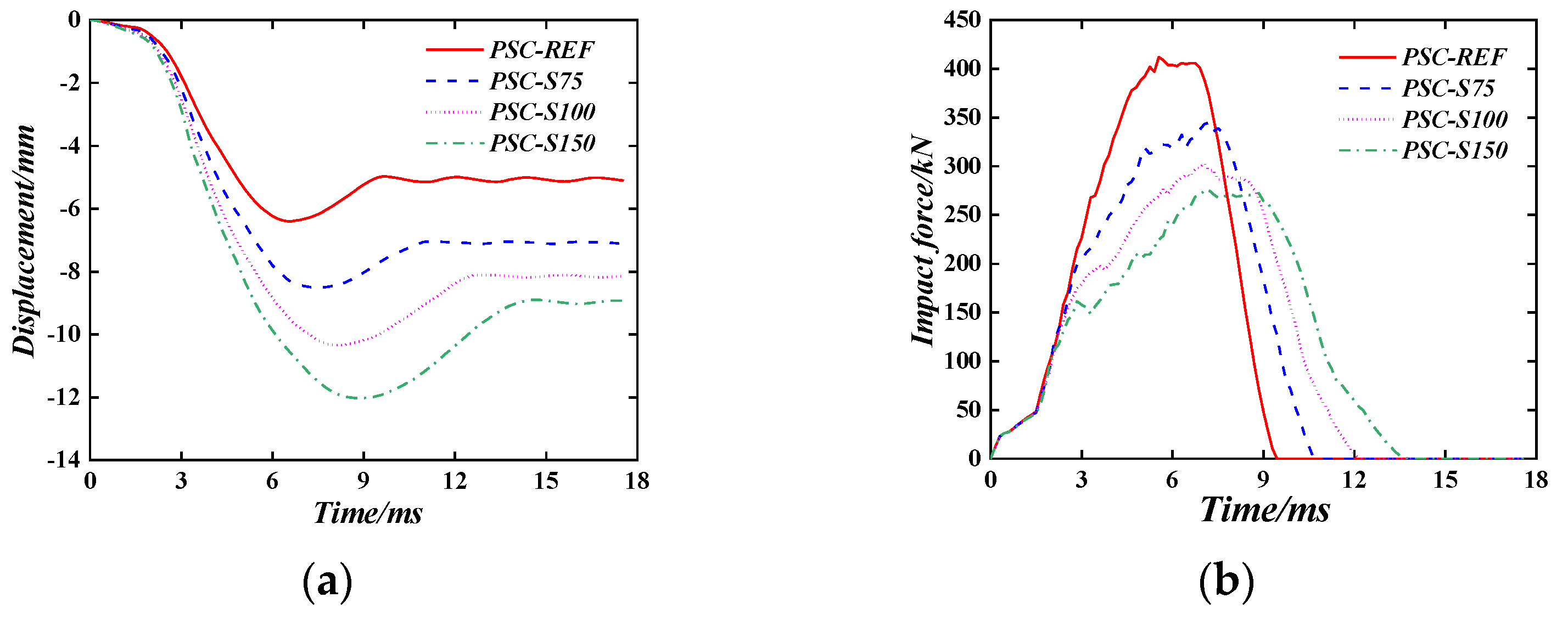
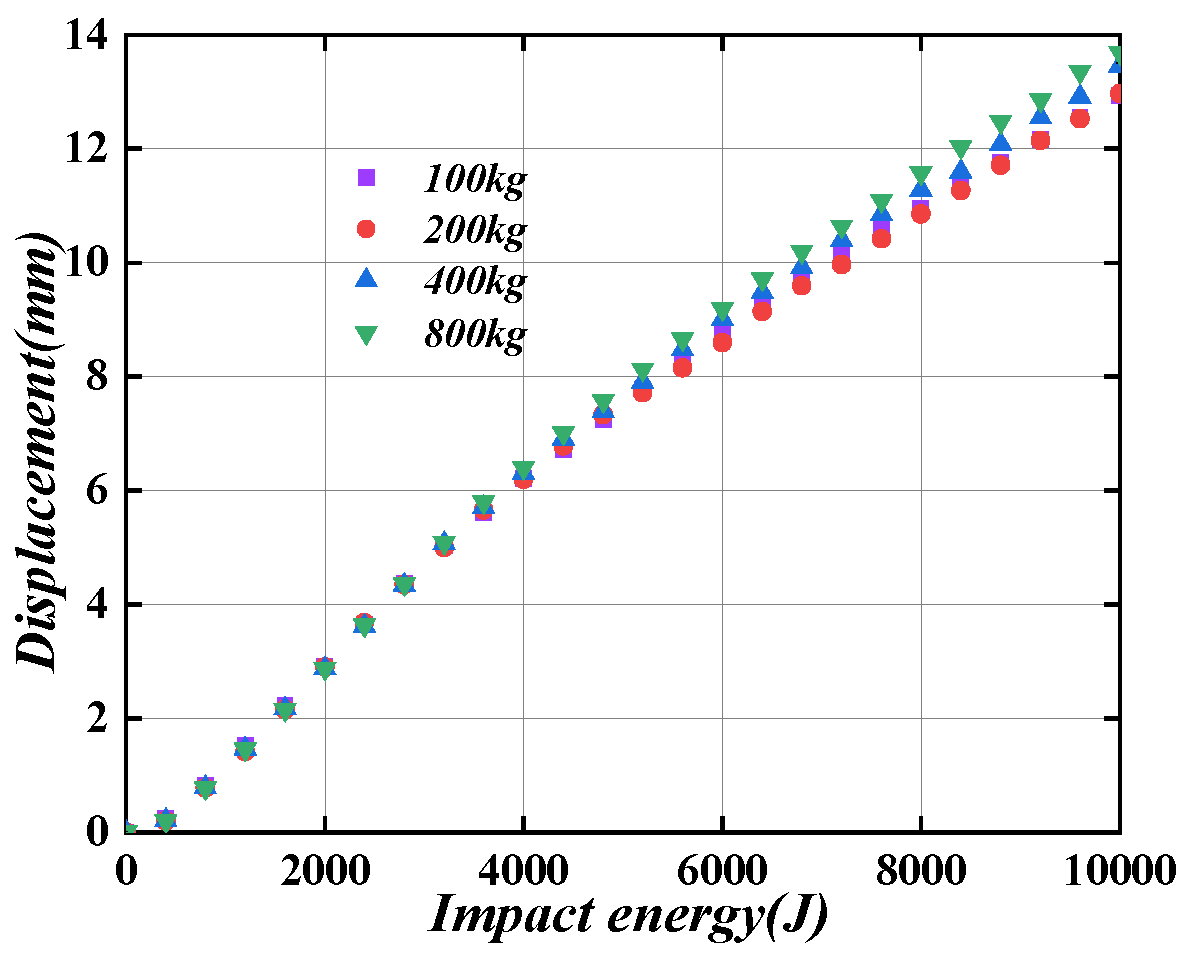
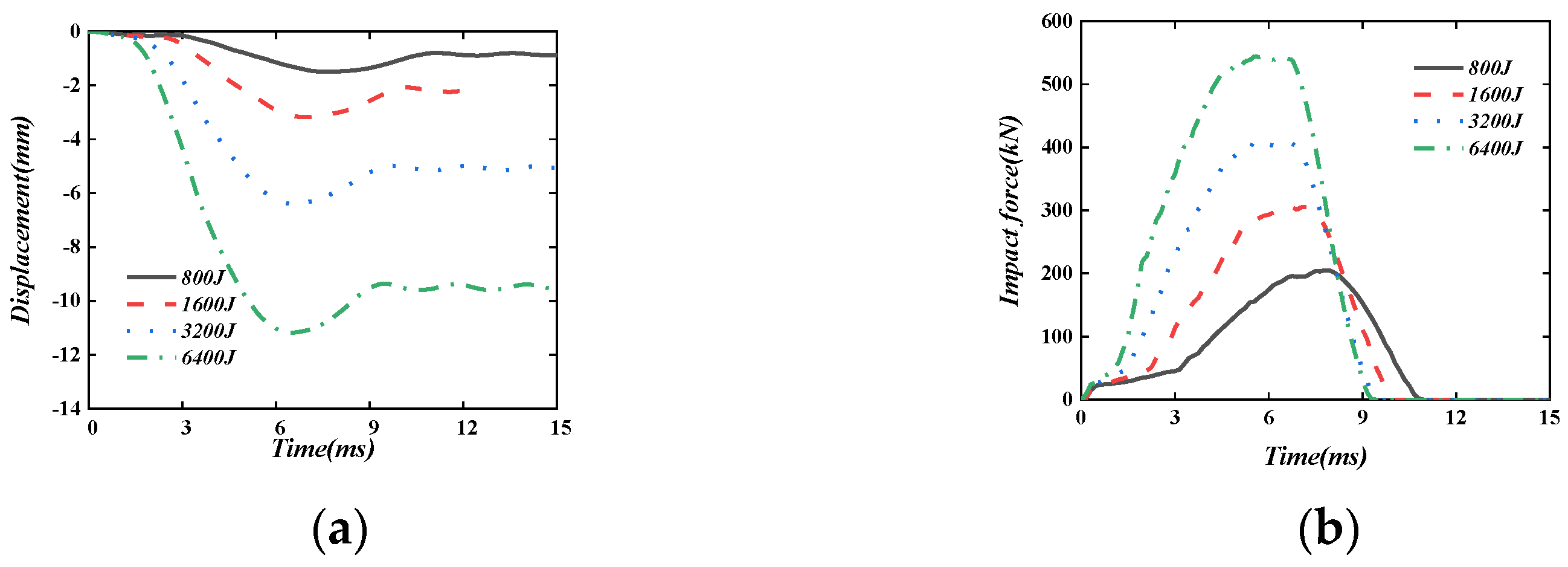
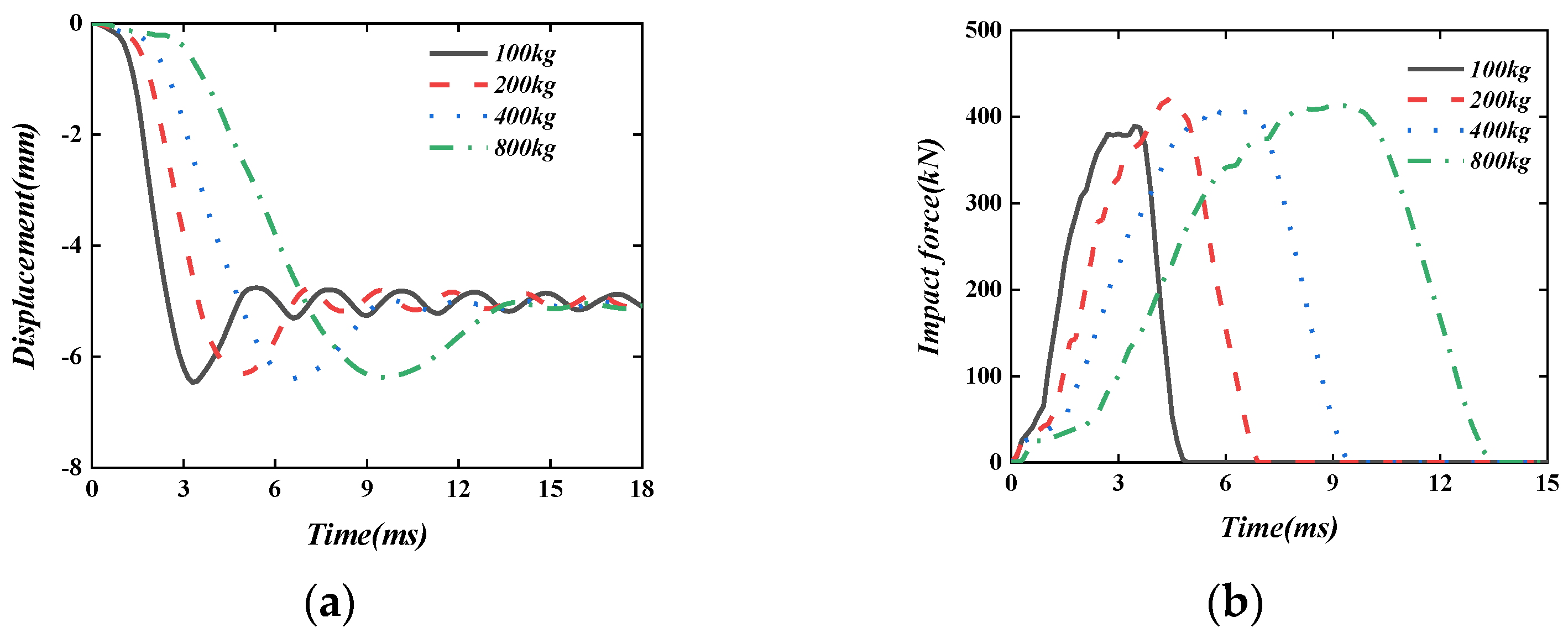
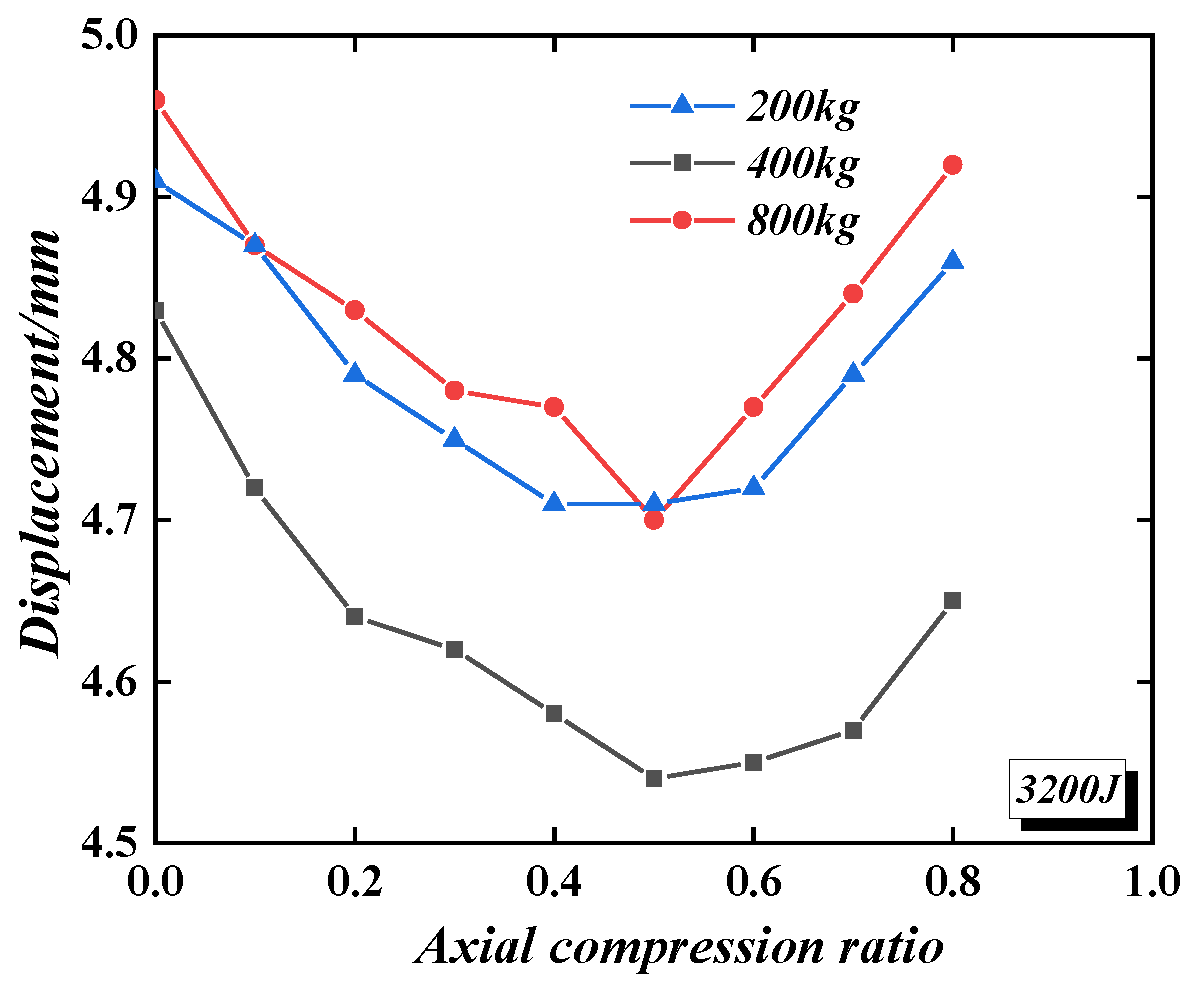

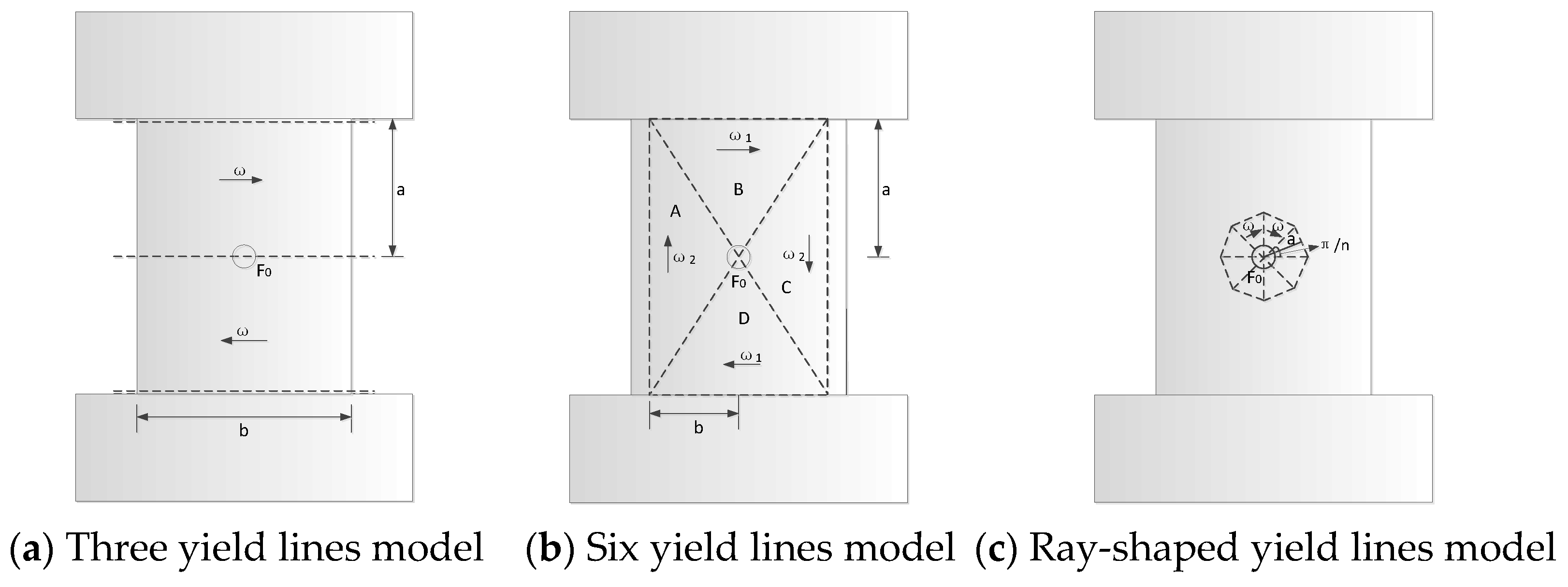
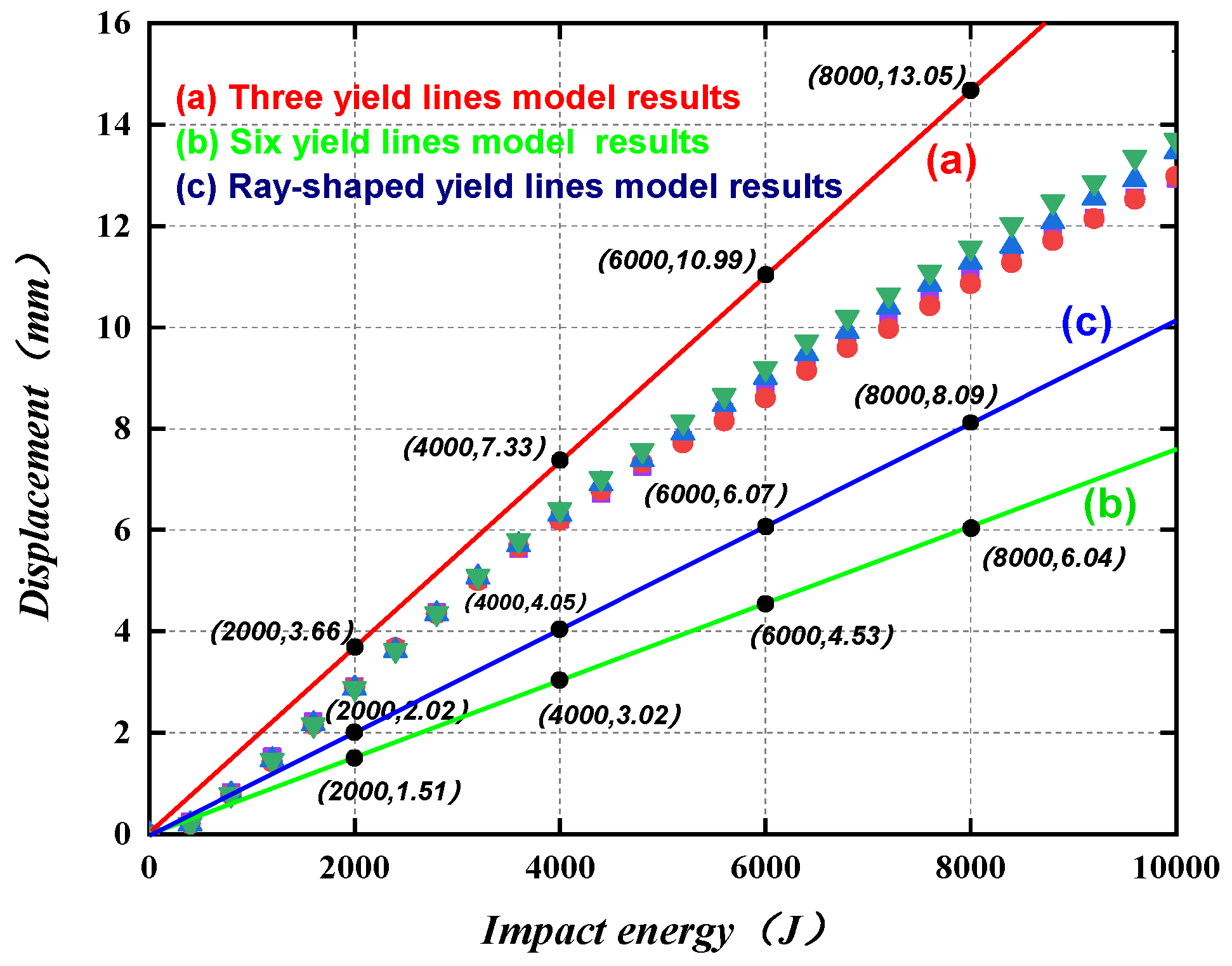

| Density (kg/m) | Relative Density | Young’s Modulus (GPa) | Poisson’s Ratio | Plateau Stress (MPa) | Densification Strain |
|---|---|---|---|---|---|
| 500 | 0.185 | 0.418 | 0.2 | 8.5 | 0.65 |
| Number | Fall Spacing/m | Axial Compression Ratio |
|---|---|---|
| H15 | 1.5 | 0 |
| H30 | 3.0 | 0 |
| H45 | 4.5 | 0 |
| H15N | 1.5 | 0.05 |
| No. | Specimen | Specimen Size (mm) | Maximum Displacement (mm) | Plastic Displacement (mm) | ||||||||
|---|---|---|---|---|---|---|---|---|---|---|---|---|
| H | b | t | tc | ts-out | ts-in | tf−1 | tf−2 | s | ||||
| 1 | CBSP | 900 | 780 | 100 | 94 | 3 | 0 | 0 | 0 | 50 | 7.61 | 6.6 |
| 2 | PSC-REF | 900 | 780 | 100 | 68 | 3 | 3 | 10 | 10 | 50 | 6.41 | 5.07 |
| 3 | PSC-O4 | 900 | 780 | 100 | 66 | 4 | 3 | 10 | 10 | 50 | 6.01 | 4.58 |
| 4 | PSC-O2 | 900 | 780 | 100 | 70 | 2 | 3 | 10 | 10 | 50 | 6.79 | 5.52 |
| 5 | PSC-I4 | 900 | 780 | 100 | 66 | 3 | 4 | 10 | 10 | 50 | 6.23 | 4.86 |
| 6 | PSC-I5 | 900 | 780 | 100 | 64 | 3 | 5 | 10 | 10 | 50 | 6.52 | 4.66 |
| 7 | PSC-I6 | 900 | 780 | 100 | 62 | 3 | 6 | 10 | 10 | 50 | 5.68 | 4.15 |
| 8 | PSC-F(12-8) | 900 | 780 | 100 | 68 | 3 | 3 | 12 | 8 | 50 | 5.98 | 4.72 |
| 9 | PSC-F(14-6) | 900 | 780 | 100 | 68 | 3 | 3 | 14 | 6 | 50 | 5.54 | 4.32 |
| 10 | PSC-F(16-4) | 900 | 780 | 100 | 68 | 3 | 3 | 16 | 4 | 50 | 5.09 | 3.92 |
| 11 | PSC-F(18-2) | 900 | 780 | 100 | 68 | 3 | 3 | 18 | 2 | 50 | 4.66 | 3.5 |
| 12 | PSC-F(20-0) | 900 | 780 | 100 | 68 | 3 | 3 | 20 | 0 | 50 | 3.89 | 2.76 |
| 13 | PSC-F(6-6) | 900 | 780 | 100 | 76 | 3 | 3 | 6 | 6 | 50 | 6.86 | 5.7 |
| 14 | PSC-F(14-14) | 900 | 780 | 100 | 60 | 3 | 3 | 14 | 14 | 50 | 5.56 | 4.1 |
| 15 | PSC-F(18-18) | 900 | 780 | 100 | 52 | 3 | 3 | 18 | 18 | 50 | 5.46 | 3.74 |
| 16 | PSC-T120 | 900 | 780 | 120 | 88 | 3 | 3 | 10 | 10 | 50 | 4.5 | 3.57 |
| 17 | PSC-T140 | 900 | 780 | 140 | 108 | 3 | 3 | 10 | 10 | 50 | 3.27 | 2.54 |
| 18 | PSC-S75 | 900 | 780 | 100 | 68 | 3 | 3 | 10 | 10 | 75 | 8.53 | 7.05 |
| 19 | PSC-S100 | 900 | 780 | 100 | 68 | 3 | 3 | 10 | 10 | 100 | 10.34 | 8.14 |
| 20 | PSC-S150 | 900 | 780 | 100 | 68 | 3 | 3 | 10 | 10 | 150 | 12.04 | 8.97 |
Disclaimer/Publisher’s Note: The statements, opinions and data contained in all publications are solely those of the individual author(s) and contributor(s) and not of MDPI and/or the editor(s). MDPI and/or the editor(s) disclaim responsibility for any injury to people or property resulting from any ideas, methods, instructions or products referred to in the content. |
© 2023 by the authors. Licensee MDPI, Basel, Switzerland. This article is an open access article distributed under the terms and conditions of the Creative Commons Attribution (CC BY) license (https://creativecommons.org/licenses/by/4.0/).
Share and Cite
Xiao, H.; Yu, P.; Zhu, L.; Zhang, C.; Hsiao, P.-C. Numerical Analysis of Low-Velocity Impact Behaviour of Protective Concrete-Filled Steel Plates Composite Wall. Materials 2023, 16, 4130. https://doi.org/10.3390/ma16114130
Xiao H, Yu P, Zhu L, Zhang C, Hsiao P-C. Numerical Analysis of Low-Velocity Impact Behaviour of Protective Concrete-Filled Steel Plates Composite Wall. Materials. 2023; 16(11):4130. https://doi.org/10.3390/ma16114130
Chicago/Turabian StyleXiao, Hongmei, Peng Yu, Limeng Zhu, Chunwei Zhang, and Po-Chien Hsiao. 2023. "Numerical Analysis of Low-Velocity Impact Behaviour of Protective Concrete-Filled Steel Plates Composite Wall" Materials 16, no. 11: 4130. https://doi.org/10.3390/ma16114130
APA StyleXiao, H., Yu, P., Zhu, L., Zhang, C., & Hsiao, P.-C. (2023). Numerical Analysis of Low-Velocity Impact Behaviour of Protective Concrete-Filled Steel Plates Composite Wall. Materials, 16(11), 4130. https://doi.org/10.3390/ma16114130








